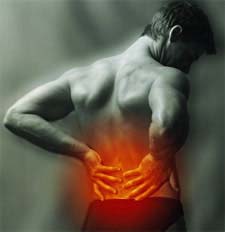 Researchers at the Lahey Clinic, in Burlington, Massachusetts, compared prolotherapy vs corticosteroid injection to treat tennis elbow (chronic lateral epicondylosis).
Researchers at the Lahey Clinic, in Burlington, Massachusetts, compared prolotherapy vs corticosteroid injection to treat tennis elbow (chronic lateral epicondylosis).
Prolotherapy involves injecting an otherwise inactive irritant into the body to strengthen weakened connective tissue and alleviate pain. Continue reading Treating tennis elbow with prolotherapy →
 This Cochrane review has received several comments and goes back to the top of the queue.
This Cochrane review has received several comments and goes back to the top of the queue.
It covers injection therapy for patients with subacute or chronic low back pain. Continue reading Injection therapy for low back pain →
 The World Health Organization has predicted a 39% rise in the worldwide prevalence of diabetes by 2030. And an article in The Lancet indicates this might be an underestimation.
The World Health Organization has predicted a 39% rise in the worldwide prevalence of diabetes by 2030. And an article in The Lancet indicates this might be an underestimation.
Since November is Diabetes Month, here’s a round-up of CAM options for people with diabetes from 2006 through March 2007.
Continue reading CAM and diabetes: An update of recent studies →
 The reviewers conclude, “There is insufficient evidence to support the use of injection therapy in subacute and chronic low-back pain.” Continue reading Cochrane reviews injection therapy for low back pain →
The reviewers conclude, “There is insufficient evidence to support the use of injection therapy in subacute and chronic low-back pain.” Continue reading Cochrane reviews injection therapy for low back pain →
 It’s so bad that she canceled her concert tour.
It’s so bad that she canceled her concert tour.
Here’s the state-of-the-art (not including pharmacology and surgery) for treating lower back pain (LBP) from the North American Spine Society. Continue reading Dolly Parton has back pain →
 Prolotherapy involves injecting an otherwise non-pharmacological and non-active irritant solution into the body — generally in the region of tendons or ligaments — to strengthen weakened connective tissue and alleviate musculoskeletal pain.
Prolotherapy involves injecting an otherwise non-pharmacological and non-active irritant solution into the body — generally in the region of tendons or ligaments — to strengthen weakened connective tissue and alleviate musculoskeletal pain.
A group of American researchers reviewed the evidence and found it lacking. Continue reading Treating chronic low back pain with prolotherapy →
 When combined with spinal manipulation, exercise, and other co-interventions, prolotherapy may improve chronic low-back pain and disability.
When combined with spinal manipulation, exercise, and other co-interventions, prolotherapy may improve chronic low-back pain and disability.
Think of it as complementary therapy for complementary therapy. Continue reading Prolotherapy and low-back pain →
 Researchers from Bastyr University in Seattle, Washington survey the use of CAM among people with chronic pain and wonder “whether opioids can be reduced by introducing such therapies.” Continue reading Using CAM to complement conventional pain treatments →
Researchers from Bastyr University in Seattle, Washington survey the use of CAM among people with chronic pain and wonder “whether opioids can be reduced by introducing such therapies.” Continue reading Using CAM to complement conventional pain treatments →
Complementary and Alternative Medicine: Fair, Balanced, and to the Point
 Researchers at the Lahey Clinic, in Burlington, Massachusetts, compared prolotherapy vs corticosteroid injection to treat tennis elbow (chronic lateral epicondylosis).
Researchers at the Lahey Clinic, in Burlington, Massachusetts, compared prolotherapy vs corticosteroid injection to treat tennis elbow (chronic lateral epicondylosis). This Cochrane review has received several comments and goes back to the top of the queue.
This Cochrane review has received several comments and goes back to the top of the queue. The World Health Organization has predicted a 39% rise in the worldwide prevalence of diabetes by 2030. And an
The World Health Organization has predicted a 39% rise in the worldwide prevalence of diabetes by 2030. And an  The reviewers
The reviewers  Researchers from Bastyr University in Seattle, Washington
Researchers from Bastyr University in Seattle, Washington